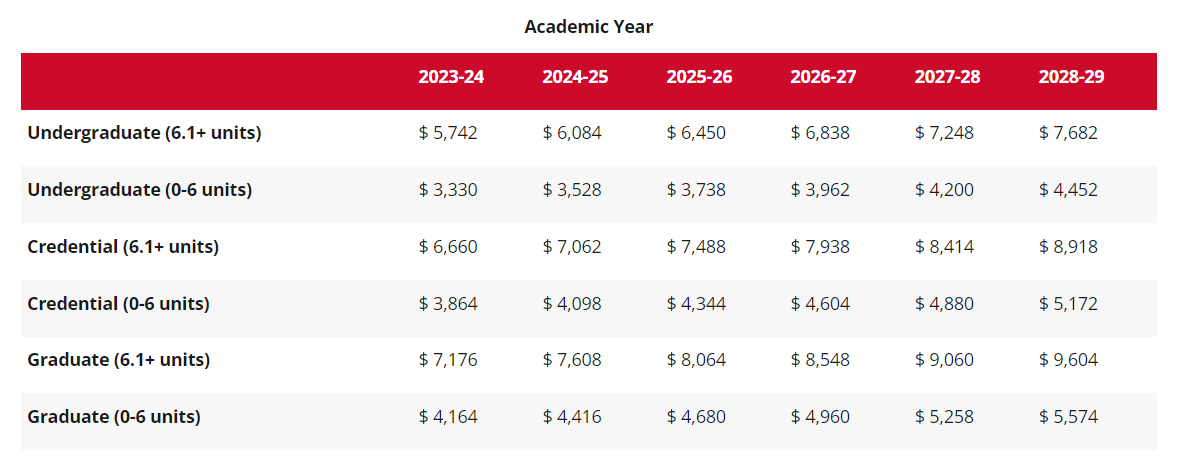On Sept. 13, 2023, the California State University Board of Trustees approved the implementation of a five-year process that will hike annual tuition by 6% each year for the next five years, beginning in the 2024-25 school year.
This hike will occur exponentially, meaning tuition in the 2024-25 school year will be 6% greater than it is this year, and in the 2025-26 school year, tuition will be 6% greater than the previous year. By the 2028-29 school year, tuition will have increased by 33.8% from its current amount.

The approval of this proposal has generated disappointment and frustration in the majority of those made aware of the hike.
Trevor Kessler, a Moorpark College alum and current student at California State University, Northridge expressed his discontent with the tuition hike.
“The tuition increase is absolutely [awful],” Kessler said. “As a college student, I make only a little over minimum wage at my job, so this price increase takes away from any [leisure] funds I had.”
The proposal was approved unanimously by the board’s finance committee. Administrators claim that the hike is necessary in order to bridge a $1.5 billion budget gap from existing programs.
This budget deficit has formed so harshly due to inflation, which has increased by 39% in the last 12 years, while CSU tuition has only increased by 5% in the same time period.
According to the CSU website, the system was created with “a mission of providing high-quality, affordable education to meet the ever-changing needs of California.” With this tuition hike, it seems to many that the CSU is steering astray from its original ambitions.
Rachel Sonshine, a senior at Newbury Park High School, commented on the tuition hike and how it is affecting her outlook on college.
“The hike does make me question whether or not I want to apply to CSU’s,” Sonshine explained. “In terms of money, community college is making more and more sense. It’s really upsetting because it will not only affect me in the short term because I will have to work more throughout college instead of putting all of my efforts toward school, but it will also affect me in the long term too, in terms of debt.”
The tuition hike is expected to generate $860 million in revenue, with $280 million going toward financial aid. 40% of undergraduate students across the CSU’s do not qualify for financial aid. In other words, 40% of students will help pay for the tuition of the other 60%, as well as programs and services offered by the CSU’s.
Julia Lopez, a member of the CSU Board of Trustees, stated “We are at a crossroads and if we don’t do it now… it’s going to get more and more difficult.”
The tuition hike comes as a disappointment to many, but the Board of Trustees claimed they were unable to find an alternative to increase the schools’ funding. As disheartening as it may be, it seems the tuition hike is necessary for the CSU’s to uphold its promise to students and staff.




















